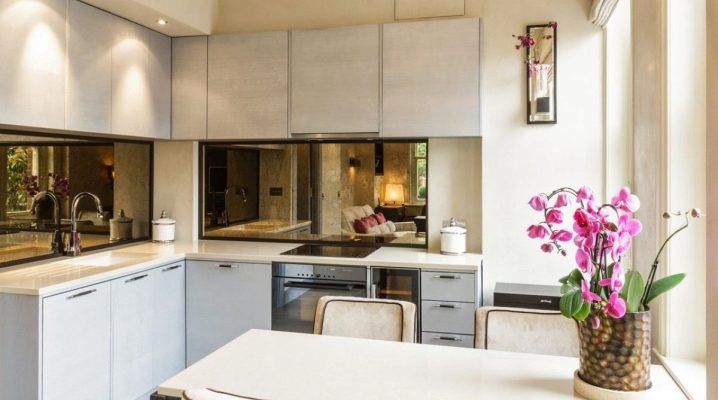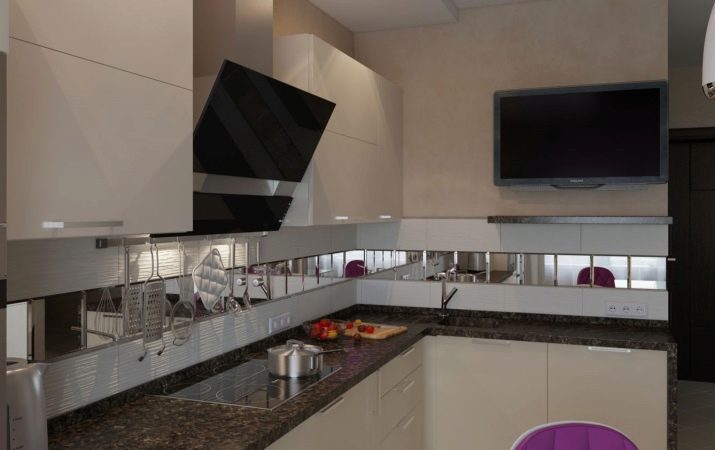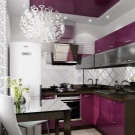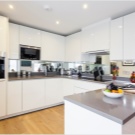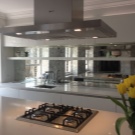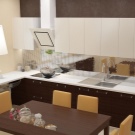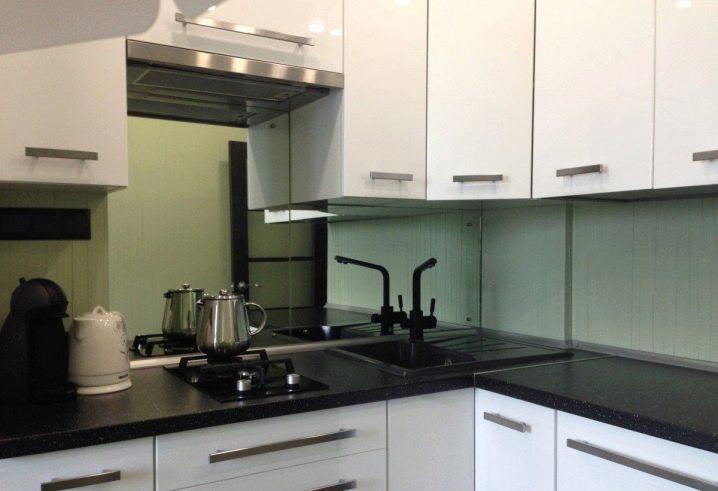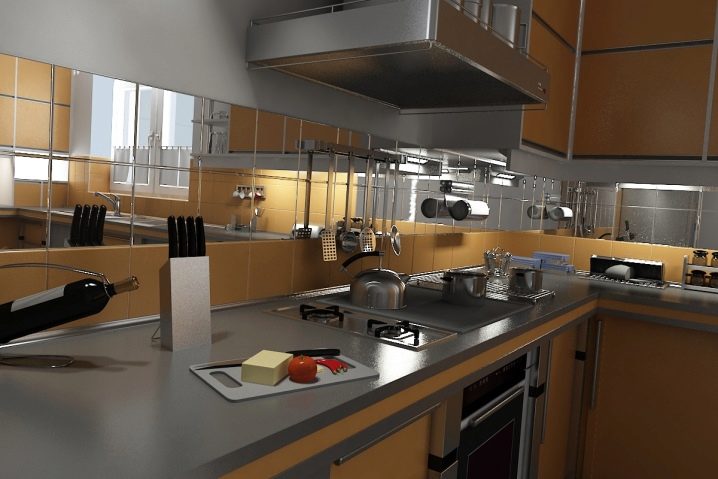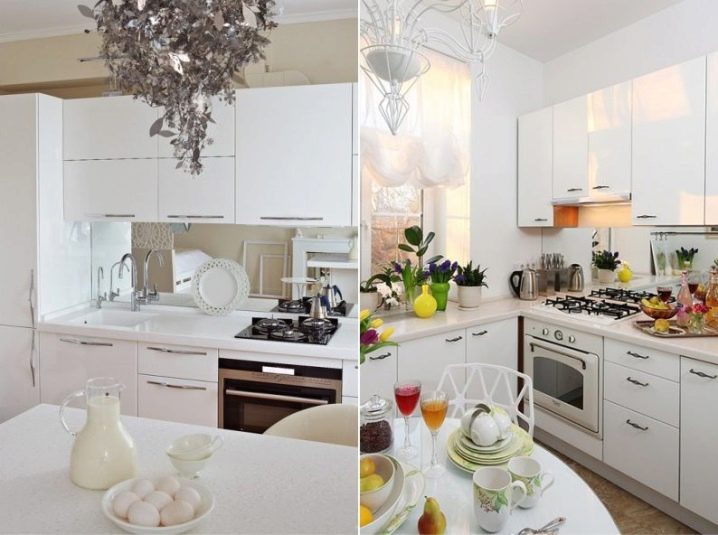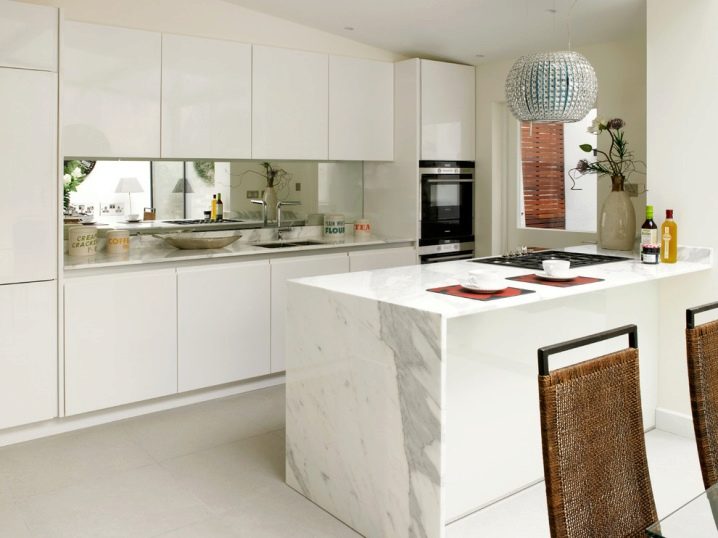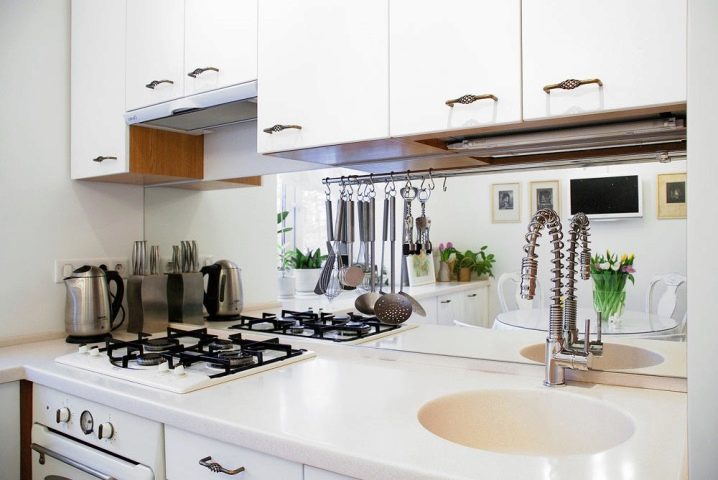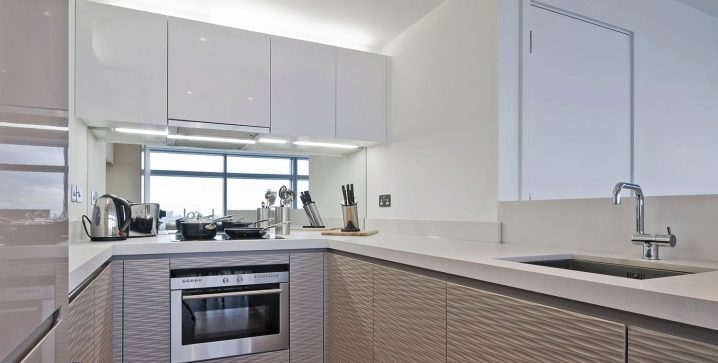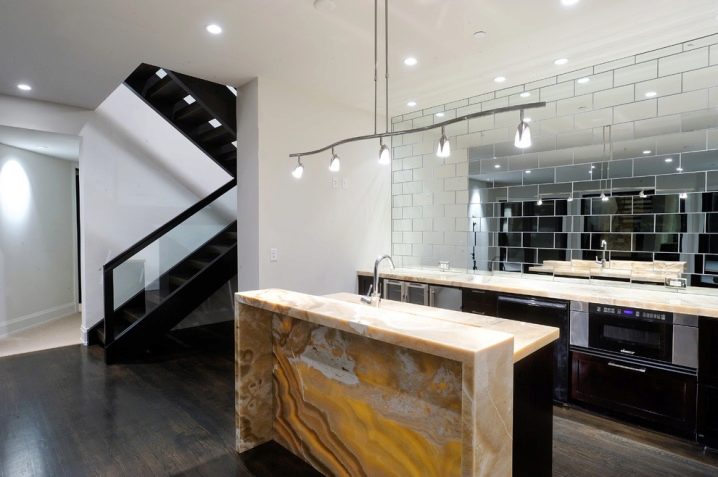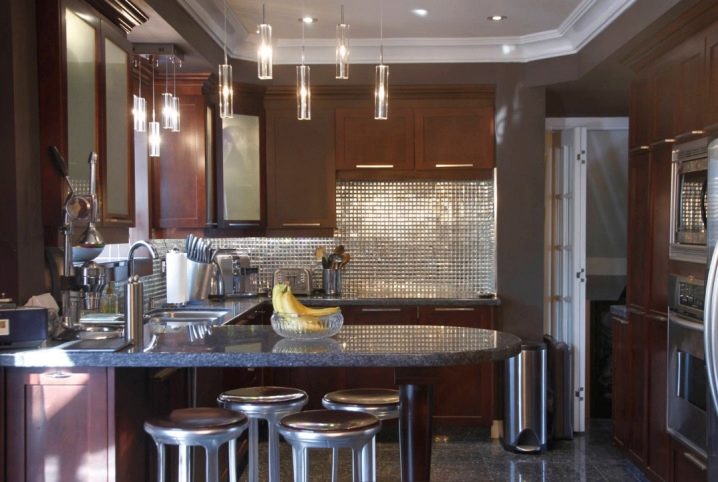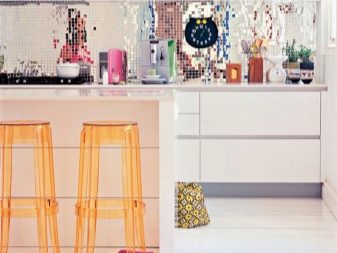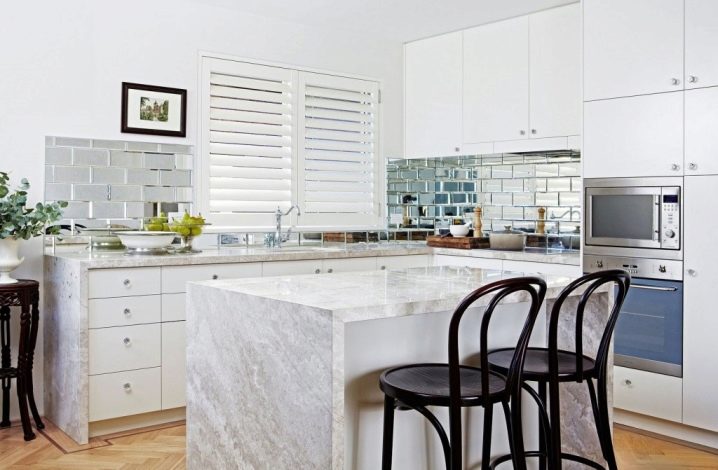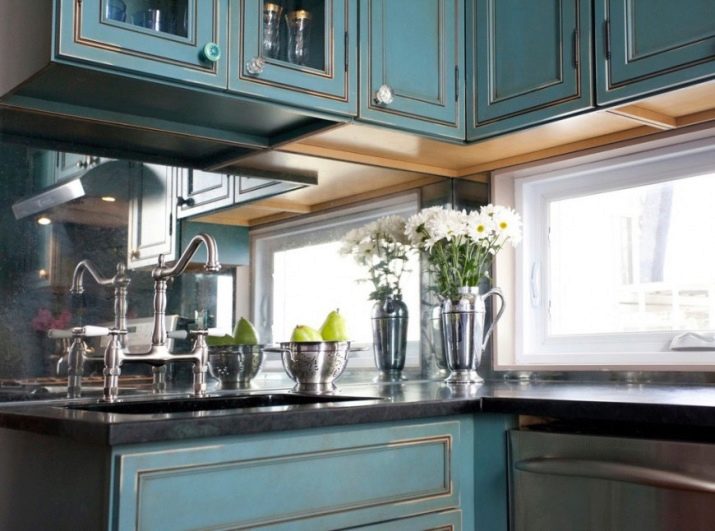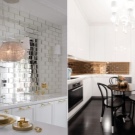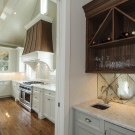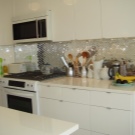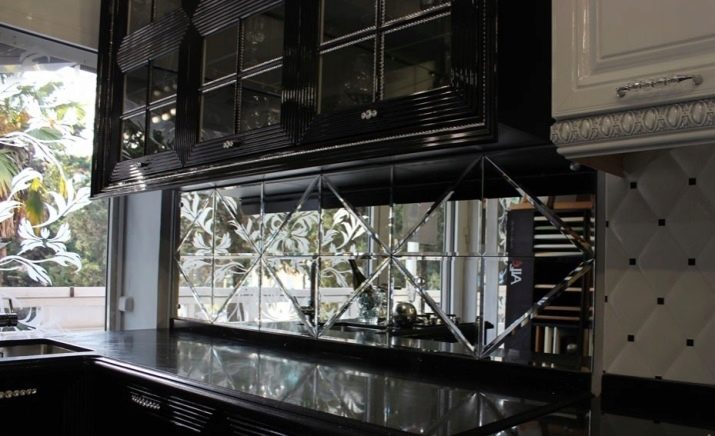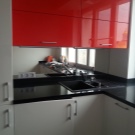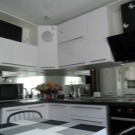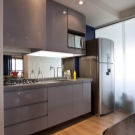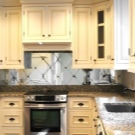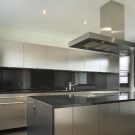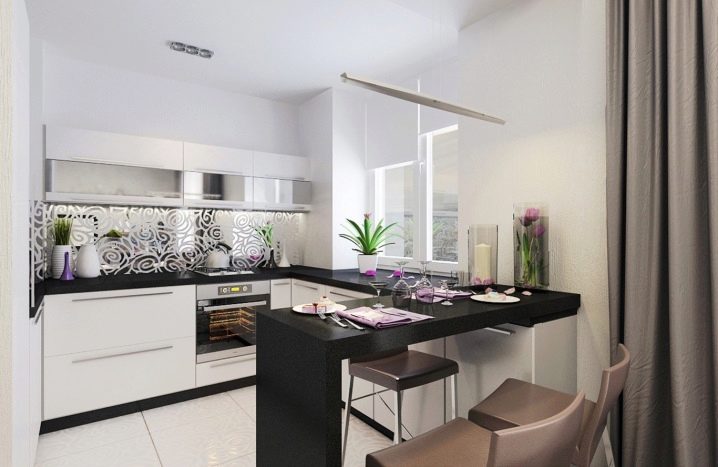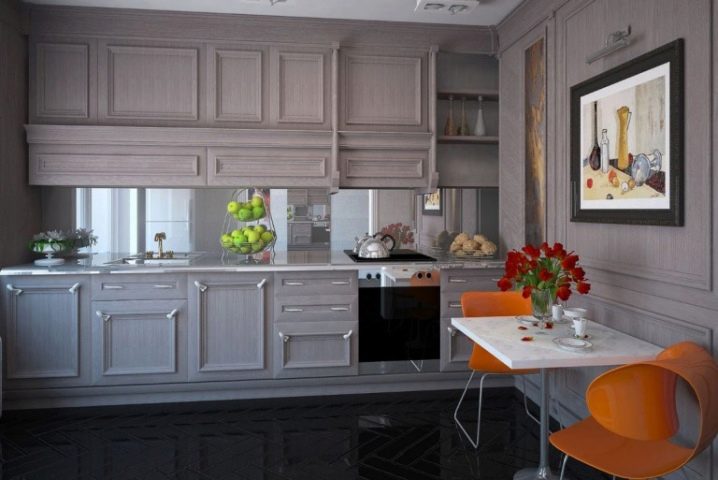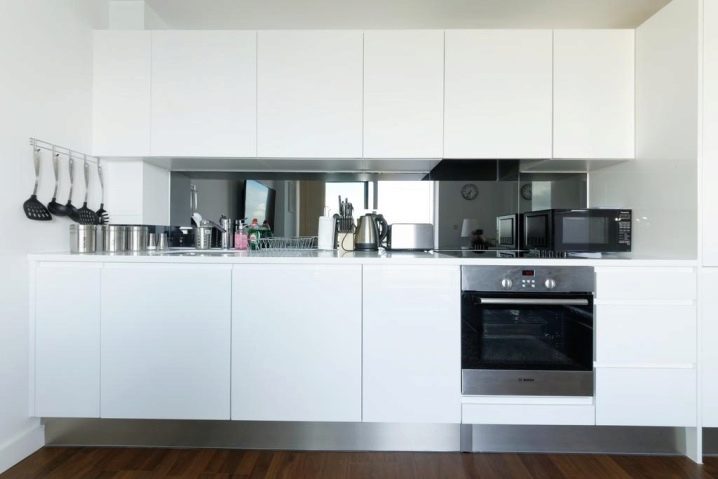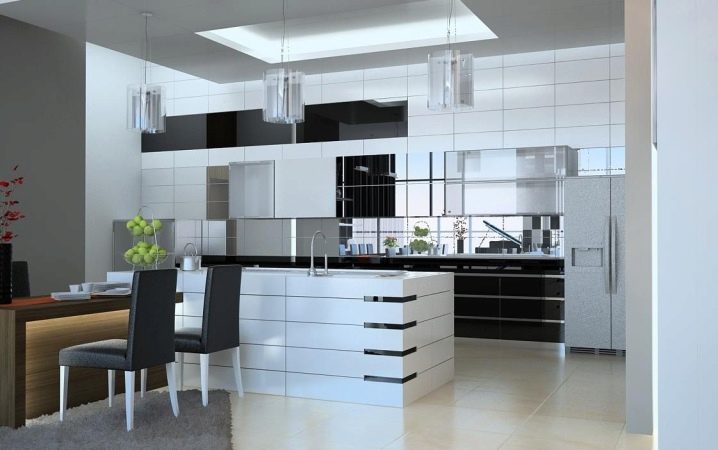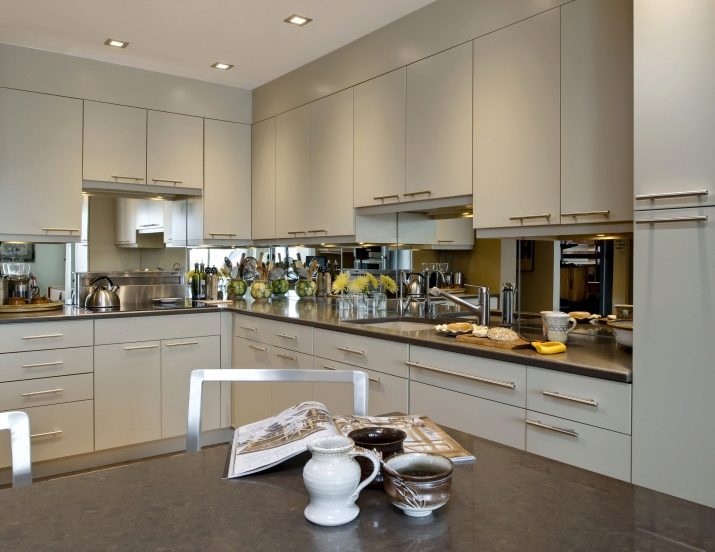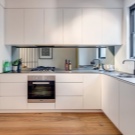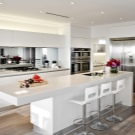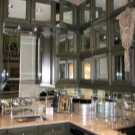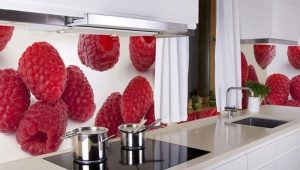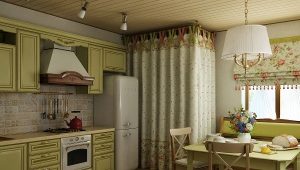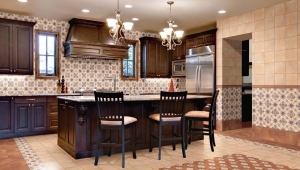Mirror apron for the kitchen
The main purpose of the kitchen apron is to protect the walls from hot splashes, grease and steam emissions that form during cooking. This is a great alternative to ordinary plaster or wallpaper, which absorb all the pollution. Mirror apron for the kitchen is always a special luxury and style.
Benefits
The main material from which the mirror aprons for the kitchen are made is tempered glass, so their appearance and functionality do not depend on temperature changes, boiling water, steam and open flame.
The mirror has a smooth flat surface on which pores are completely absent. As a result, dirt and moisture do not penetrate it. All splashes remain on the surface and are easy to clean with a special cloth. At the same time the hostess can use an ordinary glass cleaner.
The apron mirror is resistant to the use of household chemicals. This greatly facilitates the care of the surface.Only hydrofluoric acid can spoil the mirror surface, but it is not used in everyday life. Not less advantage is the resistance of the mirror surface to mold and fungal environments.
disadvantages
The strength of the mirror may be lower than the strength of a regular tile. However, an apron made of high-quality tempered glass can withstand the blows of a hammer. The mirror surface may be damaged if in the process of caring for it to use cleaning products with particles of abrasives in the composition. At the same time, an attractive appearance can be lost, and scratches on the glass will lead to a cloudy surface.
Varieties of material
Mirror Panels
They are made of tempered glass and are characterized by high impact resistance. The length of such a panel of a mirror can reach three-meter length, so with its help you can create a single mirror structure with a single corner joint. This option significantly expands the kitchen space, creates a feeling of increased space.
Mirror apron very well reflects the light and creates a feeling of a single space.A special effect can be obtained if you opt for panels with a matte pattern on a transparent or tinted surface. The painted elements on the mirrors also look great, but they are a little more difficult to care for.
Mirror tile
This is a wall covering material in the form of a tile with a smooth surface. The size and configuration of such a tile can be different: as usual squares, and in the form of small bricks. In this case, it turns out very beautiful and spectacular apron, but caring for him is complicated. The joints between the tiles are usually filled with sealant, but it is impossible to completely avoid cavities and the dust accumulated in them must be wiped more often.
Mirror tiles can be frosted, shiny, with the effect of broken glass and even with geometric patterns.
Mosaic
This type of mirror apron very nicely fits into the interior of a large kitchen. Mosaic elements crush space and do not create a sense of a holistic structure. The mosaic apron from the smallest elements of various forms looks very beautiful and impressive. Designers actively use this option when creating a kitchen interior in high-tech and modern styles.
Fixing mosaic panels is slightly different from others. Small elements are glued to a plastic base, and then together with the base are transferred to the wall.
Installation
The technology of mounting the apron largely depends on the size of the panel itself. Obviously, a 3 meter long mirror is much more difficult to fix than smaller elements. And in some embodiments, it will be more rational to use the mounted method. And in that, in another case, a flat surface is necessary, therefore, before beginning installation, it is necessary to perform work on leveling the wall.
Step-by-step work on the assembly of a mirror apron can be represented as follows.
- Calculate the required number of tiles or panels, based on the measured area of the apron. At the same time, for safety net, it is recommended to increase the volume by 10%.
- A layer of special glue is applied to the surface.
- The element of the apron is applied to the wall, holding it with 10-15 seconds.
- The next fragment is placed next to the previous one; tile tiles are placed between the tiles.
- Thus, the entire apron is consistently folded. It will take about 48-72 hours to finish and harden the adhesive.
- The joints between the tiles are rubbed using transparent silicone. It is best to apply it with a special gun and small doses.
Designer Tricks
Using a mirror apron, like white, is the most famous design technique for expanding the space in the kitchen. However, even in this case, certain circumstances may arise which must also be taken into account in order to avoid the opposite effect.
It should be borne in mind that the apron in the kitchen takes up relatively little space between the upper and lower cabinets and the working area, due to the mirror surface, looks like a single whole. You should not place mirrors only at the tile or just above the sink, as this will cut the space.
Another example is if the cabinets are located at a very large distance from each other and the mirror only aggravates the situation, alienating them even more. In this case, designers recommend combining the mirror surface with the material that was used to decorate the other walls of the kitchen.
Specialists associated with the design of rooms, known for the ability of mirrors to reflect light. This allows you to rationally distribute light in the kitchen space.Sometimes, instead of luminaires, it is considered sufficient to use the light in the area of the mirror apron.
The surface of the mirror apron can have different shades. It is also worth considering when interior design. For example, light and golden glass can be combined with wooden furniture, household items and accessories. And dark tones with tinting will perfectly fit into the hi-tech kitchen.
Housewives Reviews
Many housewives dream of a stylish and modern kitchen. Owners of kitchen rooms with a mirror apron note not only their luxurious aesthetic effect, but also practicality. It is much easier and faster to wash a solid mirror surface than a wall with ordinary ceramic tile with seams. Separately, the housewives say that the idea of hanging something on the apron is likely to be abandoned and your kitchen utensils, knives and spices will have to look for another place.
